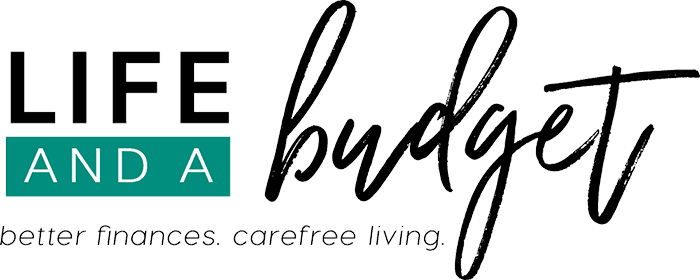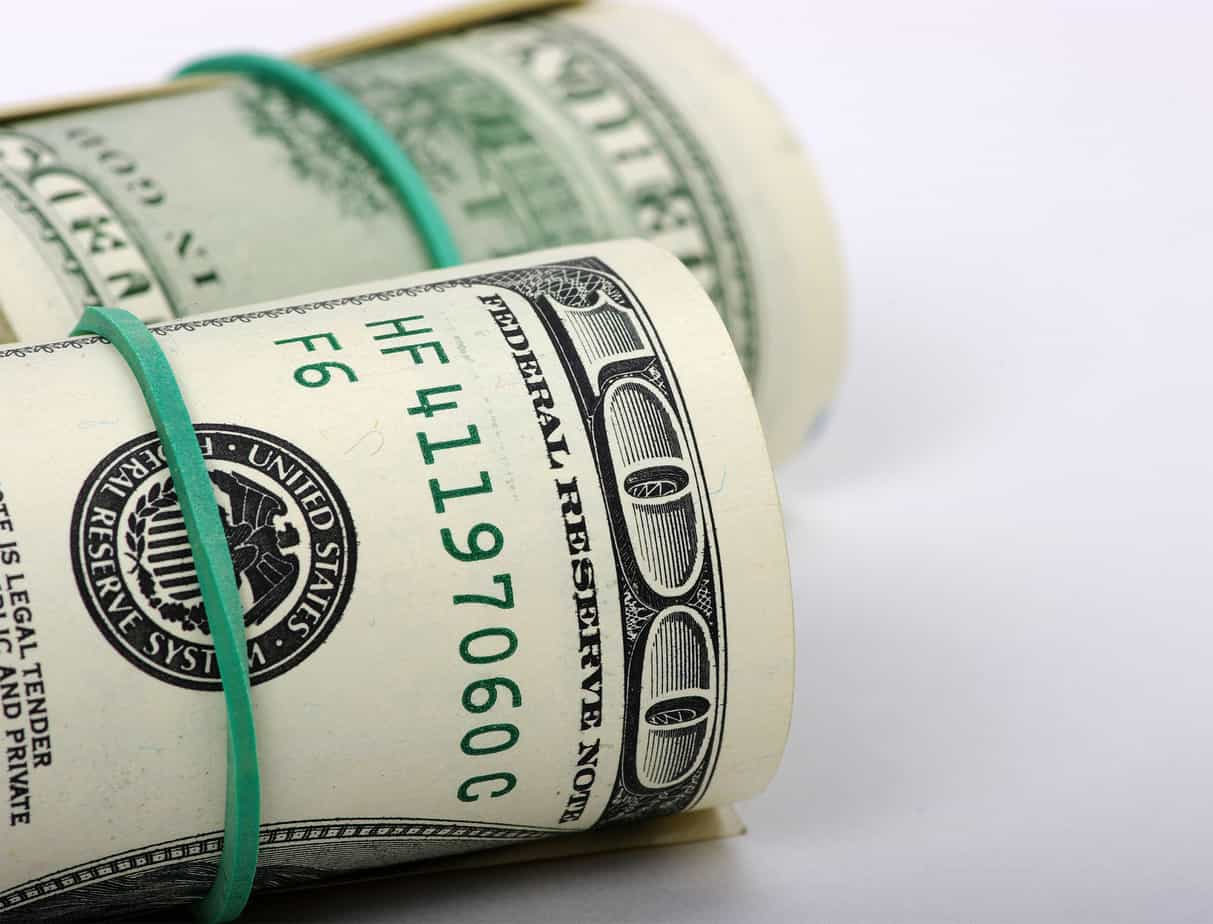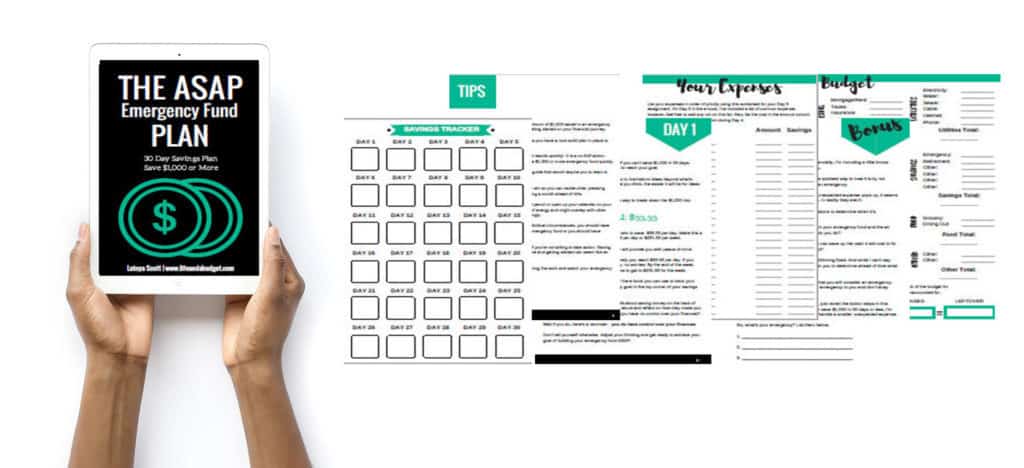 An emergency fund is the cornerstone of a healthy financial plan. Without a pre-determined amount of money set aside you are probably one paycheck away from financial ruin.
An emergency fund is the cornerstone of a healthy financial plan. Without a pre-determined amount of money set aside you are probably one paycheck away from financial ruin.
I know you have those credit cards tucked in the back of your wallet. You figure if anything happens you can just whip it out and make any future problems disappear.
But I have a question for you, how long can you finance potential unemployment before filing bankrupt? Tough question to consider, isn’t it?
Let me break it down for you.
You bring home $4,600 after taxes and insurance every month. You don’t save because you’ve been led to believe you need to live a $4,600 lifestyle because that’s what you bring home.
Multiply that $4,600 by the average length of unemployment (roughly 7 months). That’s a whopping $32,200. Now don’t forget to tack on that credit card interest.
Do you really want to finance your emergency on a credit card?
If you don’t, I’m going to give you the scoop on emergency funds. Consider this your go-to guide.
If you already have a sufficient emergency fund (fist bumps) pass it along to someone who may need it. If not, settle in for a good read because I’m going to drop some knowledge that will help you get your financial life in check.
How do you build an emergency fund if you’re struggling to get ahead?
Okay, so boom — let’s start with the tough scenario first.
You don’t like using plastic, but you’re literally struggling. All your bills are paid on time, you have food on your table, and a roof over your head, but there never seems to be anything left for any extras. You can barely afford dish detergent to wash dishes, let alone save a little for a rainy day.
You live for the 1st because it’s the day you know you will have money in your account to pay the light bill and rent. The check that arrives on the 16th will fill up the gas tank to last you until the 1st.
Those are your priorities, I get it. The bills have to be paid, but if you don’t come up with a solution to end the paycheck to paycheck cycle, you will struggle for the rest of your life. Who wants that?
Given this scenario, any bump in the road, like a flat tire, would have you on the streets abandoned, holding your thumb out — hoping a serial killer doesn’t pick you up and put you in their deep freezer.
Seriously, you can’t afford a blown-out tire because you do not have the money to replace it, AND your cell-phone bill is overdue, so you can’t call for help. Moments like these are when emergency funds are necessary.
Don’t worry though because there is hope. I’ve got some solutions, but you may have to deal with some negative money mindsets that will keep you from receiving them. Once you’ve dealt with those, read on.
- Temporarily change your name to frugal. Frugal has a bad rep in some circles and if you associate yourself with folks who talk down on those who are frugal, I would suggest you simply ignore them (or get yourself some new friends). Search for ways to lower any variable expenses such as groceries, gas, power, water, or laundry. There is something you can cut out, and if it’s only $20.00, that’s twenty bucks you can put towards your emergency fund.
- Next look at your fixed expenses and see how much you can cut back. Can you move to a cheaper area? What about a roommate? Can you give up your car and carpool with a co-worker? Remember, none of this is permanent. These are only temporary solutions that can help you build a nice sized emergency fund.
- Find stuff you haven’t used in more than 6 months and sell it. Don’t give me that I may need it later crap either because seriously that floor stereo is so nineties. If you have one and it is collecting dust in a corner, please sell it and add the $25 it’s worth to your emergency fund.
- Last, you may not have a money management issue – you simply need more income. If you can barely meet your basic needs on your regular full-time salary, consider taking on a part-time job or a side-hustle. Side hustles are convenient and range from online gigs to one-off gigs you can pick up on a weekend. Don’t be afraid to ask for overtime too if it’s available.
Check out this post: 4 Easy Realistic Ways to Start an Emergency Fund
How much do you need in an emergency fund if you’re in debt?
Here is the most important thing you need to consider if you are in credit card debt: What are you going to do in the event of an emergency with no savings? If you have no savings and you are planning to pull out your card and tack on more to your existing balance, you will never get out of debt!
If you have credit card debt, I highly suggest saving alongside your debt repayment plan. You could keep a small buffer emergency fund and throw as much additional money towards your debt to make progress on paying down the principal balance.
Your buffer could be any amount you’re comfortable putting aside for emergencies. Some experts suggest $1,000; however, I have kids and my husband and I are more comfortable with a starter emergency fund of at least $3,500.
It’s nowhere near the recommended 3 to 6 months for individuals who don’t have debt, but it’s enough to put us at ease should we have an emergency.
Once you reach your ideal buffer emergency fund, pay down as much debt as you can. If you have an emergency come up and have to dip into your savings, ease up on your aggressive debt repayment until you build your emergency fund back up to the safe buffer amount you’ve determined you’re comfortable keeping.
How much do you need in an emergency fund if you have two incomes?
Let’s consider this little scenario.
Jason is a web developer and Maya is a public relations specialist. They are newlyweds who are ready to build their emergency fund and they have no debt. Jason brings home $3,000 after taxes, insurance (for both him and Maya), and 401k contributions. Maya brings home $2,600 after taxes and 401k contributions.
If we were to create their savings plan based on their take-home pay alone, we would say they need to save three to six months worth of their total income ($5,600).
This means they would need to save somewhere between $16,800 to $33,600. That’s a pretty intimidating number, right? But what if I told you they probably wouldn’t even need to save that much?
If Jason lost his job, they would be out $3,000 plus medical insurance each month. If Maya lost her job, they would only be out of $2,600 a month.
It’s possible that two people could lose their jobs at the same time, but let’s not deal with the worst-case scenario. We’re just going to pretend that Jason lost his job.
His job loss would create a $3,000 loss in income and they would no longer have medical insurance. So they would need to adjust their lifestyle expenses and savings rate to accommodate $3,000 loss in income.
Both would need to consider what they could live without during an emergency and use this to create an emergency budget (more on that later).
Since Jason is the breadwinner, their emergency fund should be enough to accommodate 3 to 6 months worth of his income plus the cost of medical insurance.
This gives them a target savings goal of $9,000 to $18,000 plus an additional amount for insurance coverage. If they have to use their emergency fund, they can further cut expenses to maximize their savings.
Key Takeaway: Save an amount you’re comfortable with, but aim for 3 to 6 months of the highest income. You can always add later. This is basically why it’s called personal finance — you get to choose what is best for you!
You mentioned something about an emergency budget above — why would I need one of those?
We’ve established an emergency fund is 3 to 6 months of living expenses that one uses in the event of a job loss or major medical emergency. I also briefly mentioned Jason and Mia didn’t have to save three to six months of their combined income.
It’s easy to assume the amount of your emergency fund should be equal to the amount of income you bring in each month — however, realistically your lifestyle wouldn’t necessarily be the same during an emergency. Because of this, creating an emergency budget is a good idea to determine how much money you should set aside for an emergency.
What is an emergency budget?
An emergency budget is a deflated lifestyle budget where you cut out all non-essential expenses you could survive without during a season of emergency. If you lost your job or have a medical emergency, many of the things you enjoy can temporarily be given up until the emergency no longer exists. The purpose of this type of budget is to ensure you could live off of your emergency fund as long as possible while you search for other means of providing income or you’re medically able to go back to work.
How do I create an emergency budget?
To create your emergency budget, think of all of your necessities and make a list of them. To help get your juices flowing, here is a list of some of the most common necessities:
- Rent
- Groceries
- Medical Insurance/Healthcare
- Auto Insurance
- Gas/Electricity
- Water
- Transportation
- Minimum Debt Payment
- Life Insurance
In this post about budgeting, I discussed the differences between wants and needs. Creating a list of items that are essential is helpful when creating your budget because it allows you to see where you can cut back and if additional income may be needed. This is a great starting point when creating your emergency budget because you can quickly eliminate all wants and focus on your needs.
This is a great starting point when creating your emergency budget because you can quickly eliminate all wants and focus on your needs.
So let’s pretend this is your regular budget:
- Rent $800
- Food $400
- Insurance/Healthcare $450
- Gas/Electricity $200
- Water $80
- Gas for Car $60
- Cable $120
- Cell Phones $100
- Gym Membership $20
- Total Debt Payments $330
- Life Insurance $30
Total: $2590
Let’s strip this down to the basics so we can determine how much you should spend during a possible emergency. Some expenses you may be able to reduce. For example, if you’re out of work — you might not purchase lunch every day; therefore, you could decrease the amount budgeted for food. You also wouldn’t be commuting to work every day so you could cut back on gas expenses. Take it a step further and it may be possible to work with your cell phone provider and find a better plan. If you don’t need a phone, you could eliminate this expense.
For example, if you’re out of work — you might not purchase lunch every day; therefore, you could decrease the amount budgeted for food. You also wouldn’t be commuting to work every day so you could cut back on gas expenses.
Take it a step further and it may be possible to work with your cell phone provider and find a better plan. If you don’t need a phone, you could eliminate this expense.
- Rent $800
- Food $400 Reduced to $300
- Insurance/Healthcare $450
- Gas/Electricity $200
- Water $80
- Gas for Car $60 Reduced to $45
- Cable $120
- Cell Phones $100
- Gym Membership $20
- Total Debt Payments $330 reduce to $210
- Life Insurance $30
Total: $2,215
For the purposes of this example, let’s assume you’re making extra monthly debt payments. During an emergency season, it may be wise to lower the amount being paid to the minimum so you’re able to reduce your cost of living.
You want your emergency fund to last until you’re employed or healthy enough to work again. Also, check the benefits offered by your credit card company.
You may be paying for extra services where payments can be temporarily suspended during times of unemployment or disability.
Using the example above, these individuals can live off $300 less than they normally would. Bringing home $3,500 a month isn’t as intimidating if you can reduce your living expenses and debt repayment during a crisis.
Where should I keep my emergency fund?
I can tell you one place you shouldn’t keep it and that’s in an account with easy access. You should not be able to dip into your emergency fund because you ran up on a shoe sale at Macy’s! You need to keep your funds in a savings account that’s not attached to your main checking account — preferably another bank altogether.
We keep our emergency fund and other savings buckets at Capital One 360.
Now listen, this isn’t an attempt to collect coins from anyone. I’m honestly sharing this because I’ve been with them since they were ING Direct. I think Capital One 360 is one of the best things since fried chicken and hot sauce.
Seriously, after signing up for online banking my finances changed for the better. Our emergency fund has continued to grow and we’ve only had to dip into it once because it forces us to use it for true emergencies only.
Out of sight, out of mind is really the best strategy when it comes to your emergency fund. We make a monthly contribution that is automatically drafted from our household checking account.
When we receive gifts or large sums at a time, I can do a manual transfer from Capital One 360 and it usually arrives in the account within 3 to 5 days.
If you ever need cash quickly, you can always attach one of their checking accounts to your savings for ease of transferring funds. We don’t use this option to transfer funds out of our emergency fund, but it’s nice to know it’s there.
If we ever have an emergency, we always put it on a credit card and transfer the funds from our emergency savings account into our household account. Once that transfer is complete we pay our bill in full.
If you’re interested in signing up with Capital One 360, I can’t recommend them enough. They are helping me stack my coins and I definitely appreciate their services!
Wrapping Thangs Up
If you don’t have an emergency fund, don’t make it harder than it needs to be. Just start somewhere! Set up a 2 to 3 percent automatic savings draft for each paycheck. Sell some things in your house.
Use your tax refund to contribute a lump sum that will help get you started. Take on part-time work or a side hustle if necessary.
You don’t want to be forced into making a choice of hitchhiking with a serial killer or hollering, “charge it” during a time of emergency.
Stay in control of your finances and create a savings plan that will protect you from the rainy days you know will eventually come.
Do you have an emergency fund? If not, what are some obstacles keeping you from starting one?


